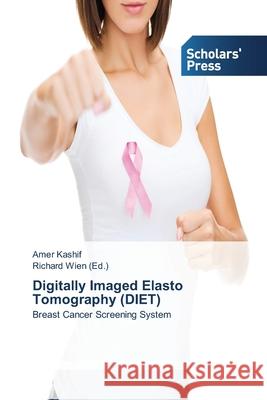Digitally Imaged Elasto Tomography (DIET) » książka
Digitally Imaged Elasto Tomography (DIET)
ISBN-13: 9783639512595 / Angielski / Miękka / 2015 / 256 str.
Breast cancer is a major health problem across the globe. Many incidences in the underdeveloped nations go unreported, due to non-availability or lack of access to breast screening programs. Mammography, the current gold standard for breast screening, comes with several inherent limitations in terms of cost, radiation exposure, and associated discomfort. Hence, there is a great and growing need for an adjunct breast screening technology. Digital Image Elasto Tomography (DIET) is intended to be a low cost, radiation free, noninvasive and portable breast cancer screening technology that will be accessible to the general population and will encourage more women to undergo breast screening. Ex-vivo and limited in-vivo trials show promise in breast cancer diagnostic evaluation. This book presents a new approach to Breast Cancer Detection and should be equally useful for researchers from medical and engineering background and/or for anyone who is interested in breast cancer research. All credit goes to Geoff Chase, Thomas Lotz and all those who contributed towards the accomplishment of this novel technology at University of Canterbury, Christchurch, New Zealand.
Breast cancer is a major health problem across the globe. Many incidences in the underdeveloped nations go unreported, due to non-availability or lack of access to breast screening programs. Mammography, the current gold standard for breast screening, comes with several inherent limitations in terms of cost, radiation exposure, and associated discomfort. Hence, there is a great and growing need for an adjunct breast screening technology. Digital Image Elasto Tomography (DIET) is intended to be a low cost, radiation free, noninvasive and portable breast cancer screening technology that will be accessible to the general population and will encourage more women to undergo breast screening. Ex-vivo and limited in-vivo trials show promise in breast cancer diagnostic evaluation. This book presents a new approach to Breast Cancer Detection and should be equally useful for researchers from medical and engineering background and/or for anyone who is interested in breast cancer research. All credit goes to Geoff Chase, Thomas Lotz and all those who contributed towards the accomplishment of this novel technology at University of Canterbury, Christchurch, New Zealand.











